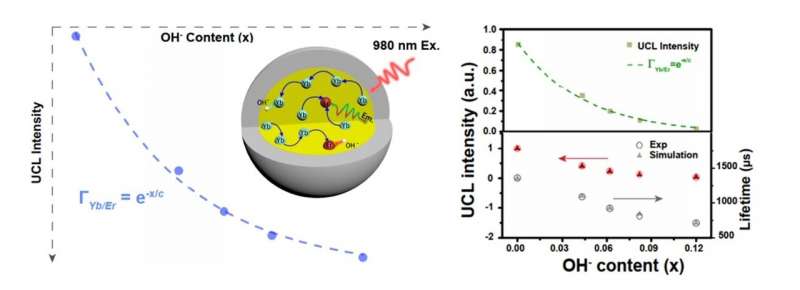Researchers led by Hong Zhang at the Van ‘t Hoff
Institute for Molecular Sciences of the University of Amsterdam
have been able to provide insight into the microscopic dynamics of
energy transfer and conversion in doped phosphors. Using dedicated
nanostructures and computer modeling they were able to
quantitatively determine the mechanism of interaction between
hydroxyl impurities and luminescence centers inside
lanthanide-doped phosphors. Their findings, which have just been
published by the Nature journal Light: Science and Applications,
will contribute to the development of novel, highly efficient
upconversion materials.



